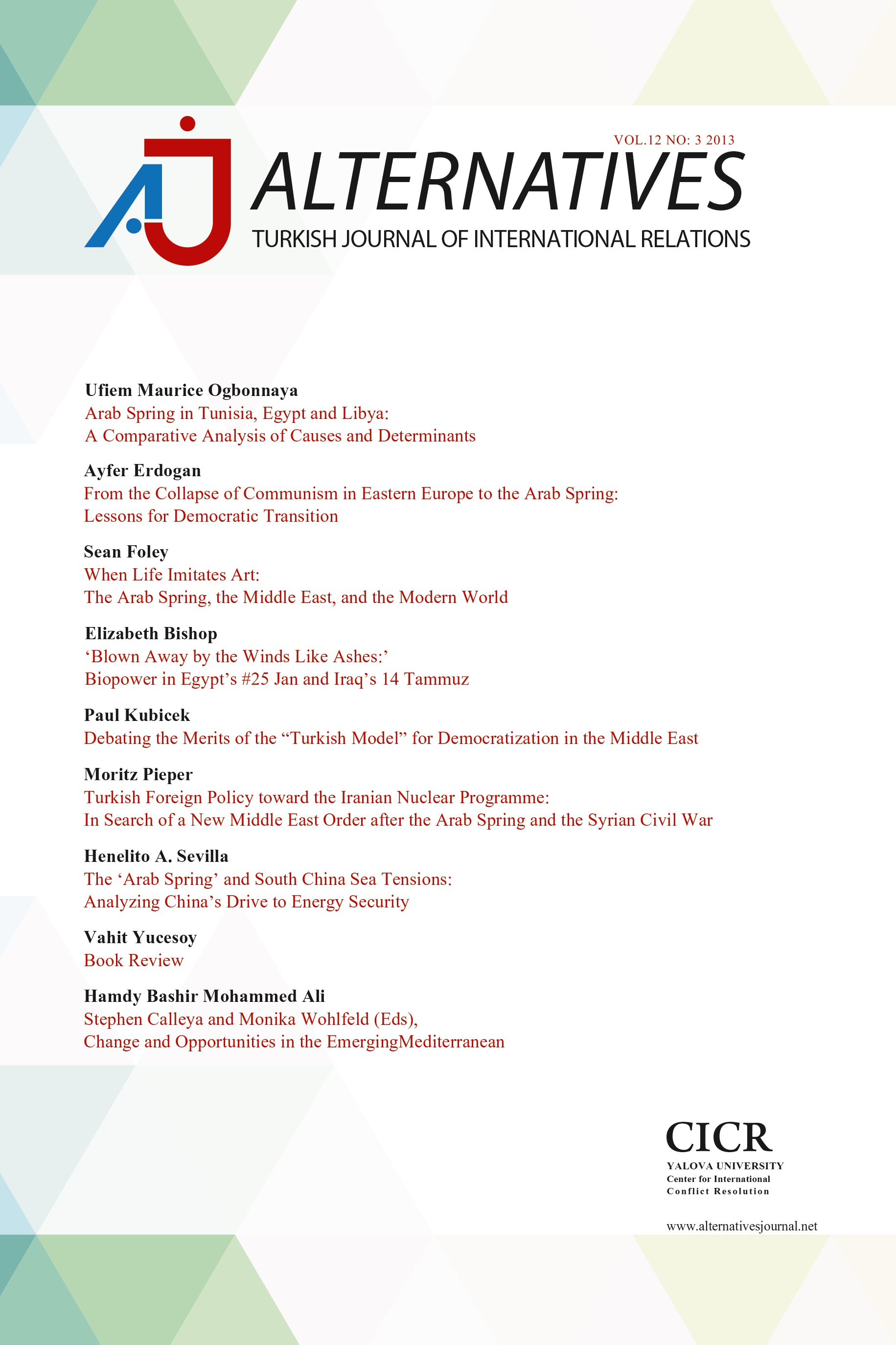Arab Spring in Tunisia, Egypt and Libya: A Comparative Analysis of Causes and Determinants
The Arab Spring, a pro-democracy uprising which has been sweeping through North Africa and the entire Arab world since 2010, has been described as a cataclysmic revolutionary wave that has seen the over-throw of numerous political regimes in its wake. This has had great impacts on the political developments and democratic governance in the Arab world in particular and the world in general. Though the political, environmental and socio-economic factors and variables that resulted in and sustained the revolutions in the affected states appear similar in nature, they vary from one country to the other.Using the MO Ibrahim Foundation Index, Transparency International's Corruption Perception Index among others on selected indicators, this paper draws a comparative analysis of the key factors and variables that gave rise to the Arab Spring. The paper focuses particularly on the North African countries of Egypt, Libya and Tunisia. Findings show that the inability of governments in these affected states to respond adequately to the growing demands of political inclusion, good governance, job creation and policies of inclusive growth played fundamental roles in awakening the people's consciousness, resulting in the revolutions.This paper recommends the institutionalization of participatory and multiparty democracy and the implementation of people-oriented policies such as job creation and the introduction of poverty reduction programmes among others, as a means of sustaining the success of the revolutions.
Keywords:
Arab Spring, Political Exclusion, Poverty, Sustainable Economic Opportunity, National Security Multi-Party Democracy,
- ISSN: 2146-0809
- Yayın Aralığı: Aylık
- Yayıncı: Yalova Üniversitesi
